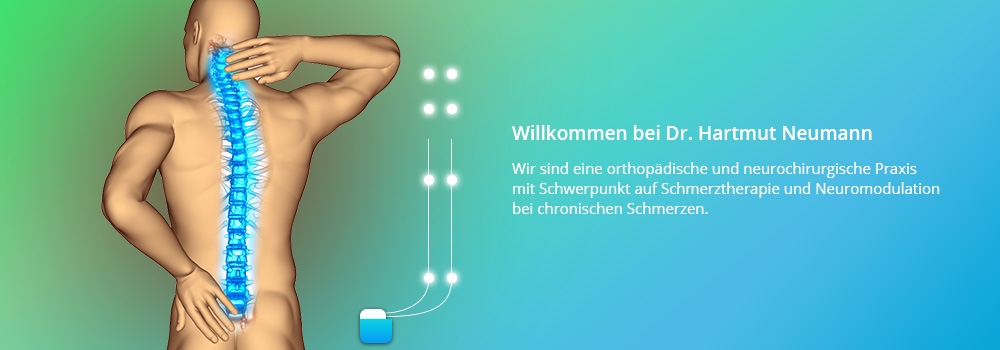Facet joint infiltrations
Pain originating from the facet joints can, on the one hand, be treated with an injection directly into the facet joint – intra-articular facet joint infiltration – or using a nerve block of the rami mediales (nerve branches that supply the small facet joints). The first method is less common.As part of different conditions, pain can originate from the facet joints of the cervical, thoracic and lumbar spine. The complaints are dependent on movement, often occurring after patients get up in the morning, when they change position in bed at night or if they have been standing up for a long time. They get better if you do some light exercise. They are often a result of osteoarthritis or excessive pressure on the vertebrae, or they occur after operations on the spine or whiplash injuries.
Using x-ray to check that it is in precisely the correct position, a syringe is placed on the spinal nerve (Ramus medialis) and its position is checked using a small amount of contrast medium. Once the needle is in the correct place, a local anaesthetic is injected, usually in addition to cortisone.
Pain reduction only lasts for as long as the medicines that have been injected remain effective, usually for a few days up to a week or so. Sometimes, this is enough. Once a block has been successfully administered three times, treatment in the same place using heat (radiofrequency thermolesion) can be considered in order to achieve long-term pain reduction. Life-threatening complications and serious drug intolerances are extremely rare. Injuries to blood vessels, haematomas and infections are also rare. Particularly rare are cases of nerve damage resulting in lasting paralysis, sensory impairment or pain. Despite these warnings, there is no reason not to go through with this type of treatment. We have been carrying out these treatments every day for years, and we have not had a single incident.


